
Features
Operations
Searching for an answer
To appreciate the scope of search and rescue in Canada, look no further than a month in the life of 442 Transport and Rescue Squadron.
September 12, 2012 By Chris Thatcher
To appreciate the scope of search and rescue in Canada, look no further than a month in the life of 442 Transport and Rescue Squadron.
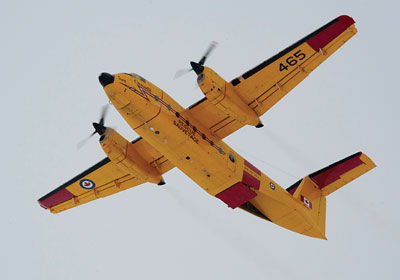 |
|
| A CC-115 Buffalo from 442 Transport and Rescue Squadron 19 Wing Comox, B.C. participates in search and rescue training exercise in Baring Bay, Nunavut, earlier this year. At 45 years of age, however, the agile Buffalos are well past their prime. PHOTO: Cpl. Jax Kennedy, Canadian Forces Combat Camera |
Over a 30-day period this summer, among other missions, the CFB Comox-based search and rescue (SAR) team airlifted a hiker off the West Coast Trail, hoisted two sailors from the waters of Queen Charlotte Sound, provided medical support for an injured hiker from the Nootka Trail, rescued two sailors from an overturned vessel near Texada Island, assisted the U.S. Coast Guard in the rescue of four American fishermen in the Alaskan waters of Dixon Entrance and evacuated a group of hikers from Strathcona Park, including one who had fallen along a cliff face at an altitude of 5,000 feet.
All of these rescue operations involved either the venerable CC-115 Buffalo airplane or the CH-149 Cormorant helicopter, and more often, both aircraft.
At 45 years of age, however, the agile Buffalos are well past their prime. Just six aircraft remain of the 15 that first entered service with the Royal Canadian Air Force (RCAF) in 1967, and all are employed by 442 Squadron for West Coast missions. Their low speed and all-weather capability have made them a superb fit for the coastal mountainous terrain. The CC-130 Hercules perform fixed-wing search and rescue operations in the rest of Canada.
As the government prepares to host its fourth industry event in recent years this October, there is renewed hope that a request for proposal may finally see the light of day before the end of the year, if only in draft form. The on-again, off-again nature of the fixed-wing search and rescue aircraft program has challenged the Buffalos and Hercs well beyond what many would have expected. Retired from production in 1986, the Buffalos are thin on spare parts while the older E and H models of the Hercs, the workhorses of the RCAF, have been stretched to their limits. A new aircraft would relieve the stress on all.
First proposed by the Paul Martin government, the FWSAR replacement project has been labelled a priority by National Defence ever since, including a commitment in the Conservative government’s 2008 Canada First Defence Strategy to have 15 new aircraft by 2015. Following the 2011 election, both Defence Minister Peter MacKay and Chief of the Air Staff Lt.-Gen André Deschamps reiterated that pledge.
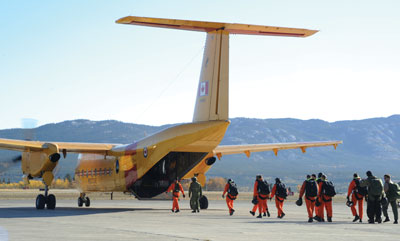 |
|
| Search and rescue (SAR) technicians board a CC-115 Buffalo before participating in the jump accuracy event during Search and Rescue Exercise (SAREX) 10. PHOTO: Cpl. Darcy Lefebvre, Royal Candian Armed Forces
|
Successive industry days since 2009 and a review of the mission requirements by the National Research Council, requested by the government following accusations that the Air Force’s focus was too narrow, have expanded the program’s scope, so much so that there is now discussion of alternative service delivery options.
An NRC report challenged some of the mission assumptions, including base locations, crewing and standby posture – a critique of the CF intent to transit to distant SAR areas from southern bases.
The report also argued the statement of requirements (SOR) should be capability rather than platform-centric, adding “a capability-based SOR should not preclude options such as having part of the
FWSAR capability contracted outside of the military. . .”
Putting it into perspective
Canada’s search and rescue mission poses some unique challenges. With almost 10,000 square kilometres of varied terrain and three ocean borders that feature some of the world’s more hostile environments, including an Arctic region that is becoming more and more accessible with each passing year, SAR has repeatedly tested the Forces’ capabilities.
On average, Canada’s three Joint Rescue Coordination Centres in Halifax, Trenton and Victoria handle 8,000 air and marine SAR cases per year, and dispatch CF SAR aircraft on more than 1,000 missions. SAR crews and aircraft are based in Gander (CH-149 Cormorant helicopters), Greenwood (CH-149 Cormorant helicopters and C-130E/H Hercules aircraft), Trenton (CH-146 Griffon helicopters and CC-130 Hercules aircraft), Winnipeg (CC-130 Hercules aircraft), and Comox C (CH-149 Cormorant helicopters and CC-115 Buffalo aircraft), and supplemented by Griffon helicopters in Goose Bay, Bagotville and Cold Lake, as well as by a small arctic fleet of Twin Otter aircraft based in Yellowknife.
And that demand is likely to grow. In May 2011, Canada signed a binding international agreement for Arctic search and rescue with the seven other members of the Arctic Council: Denmark, Finland, Iceland, Norway, Russia, Sweden and the United States. The intent is to coordinate SAR coverage and response. Whether it will expand Canada’s already massive area of responsibility remains to be seen – under the UN’s Convention on the Law of the Sea, members are still working out their Arctic territorial claims – but it could test military resources even further.
Determining the right choice
What once seemed at best a two-horse race for just the right aircraft in the FWSAR mix has over time become a full field of contenders. That’s due in part to changes to the mandatory SAR requirements, but also more favourable conditions, most notably flexibility in the basing of SAR assets. Some key contenders include:
Alenia Aermacchi C-27J Spartan
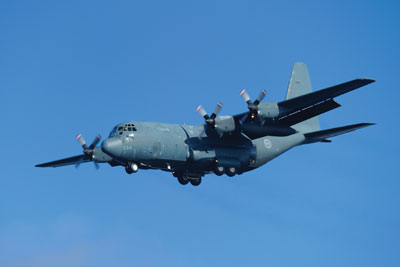 |
|
| A CC-130 Hercules approaches Summerside Airport during 413 Transport and Rescue Search and Rescue Exercise on Sept. 28, 2011. The RCAF is seeking to replace the older E and H models of the Hercs. Photo: Cpl. Vincent Carbonneau, 14 Wing Imaging Greenwood |
Long considered the front runner, the Alenia Aermacchi C-27J Spartan is a turboprop aircraft with a level of commonality with the C-130J Hercules that the RCAF has found appealing. A modernized G.222 tactical transport aircraft with a new Rolls-Royce engine, it has been referred to by some as a “Baby Herc,” with a cruising speed of 325 knots.
The Spartan is not being used as a SAR aircraft by other nations, but Alenia points to its role in humanitarian operations and missions in Scandinavian countries as an indication of its suitability for Canada’s varied geography and weather. Alan Calegari, CEO of Alenia North America, said in a recent interview that its partners – General Dynamics Canada, Provincial Aerospace Ltd. and DRS Canada, a sister subsidiary of Finmeccanica – were consciously selected for their Canadian expertise. PAL in particular offers extensive knowledge of East Coast and Arctic SAR.
EADS/CASA C-295
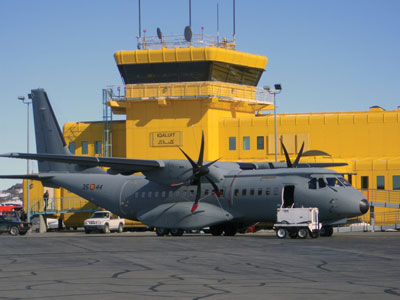 |
|
| Photo: EADS
|
The EADS/CASA C-295, also a tactical transport with turboprop engines, offers more pedigree as a maritime aircraft. The U.S. Coast Guard uses a variant while Spain, Portugal and Colombia all use the aircraft for maritime surveillance and SAR missions. The aircraft is also operated by the Finnish Air Force north of the Arctic Circle.
With a longer cabin than the C-27J, the C-295 can hold more pallets of cargo or medical litters, and its air-to-air refueling capability extends the aircraft’s range. Though some have criticized its slower cruising speed of 260 knots, the company claims that Portugal picked the C-295 precisely because of its low and slow capability. EADS has brought onboard Pratt & Whitney Canada for the engines and Thales Canada for the avionics.
Lockheed Martin C-130J
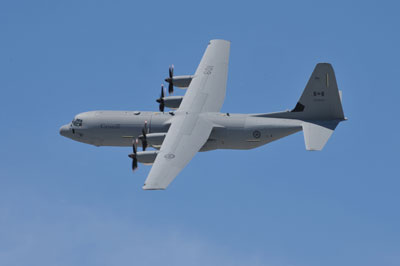 |
|
| Photo: Lockheed Martin
|
With Canada already employing some of its remaining H-model Hercules transport aircraft for SAR, acquiring a new J-model variant of the C-130 has a ring of logic to it. Lockheed Martin, which recently delivered the last of 17 new C-130Js to the RCAF, builds a search and rescue variant of the Hercules for the U.S. Coast Guard.
The company signalled its interest in the program during CANSEC in May with an announcement that it had signed an memorandum of understanding with Abbotsford’s Cascade Aerospace “to jointly pursue mutually beneficial business opportunities,” including FWSAR. In a 2009 interview, Ross Reynolds, then head of Lockheed’s Air Mobility Programs, said, “We believe the C-130J provides you with a lot more versatility than a smaller aircraft.” While the size, speed, range and cruising time are considered pluses, the four-engine aircraft would be more costly to operate.
Bell-Boeing V-22
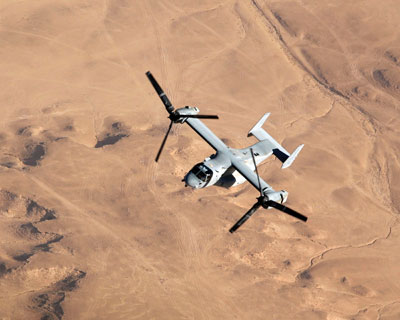 |
|
| Photo: EADS
|
One of the more intriguing contenders is the tilt-rotor V-22 Osprey. Once written off as too expensive, the Bell-Boeing aircraft is now in its fourth year of multi-year production, with 160 aircraft fielded and flying and production costs in decline. At CANSEC, Bob Carrese, executive director of business development, said the V-22 is a good candidate because “we meet all of the essential elements, just as a fixed-wing airplane, but we also bring the option for a SAR team to actually make the rescue.” That capability might recue the need to deploy both an aircraft and a helicopter, bringing the expensive Osprey more in line with other competitors.
With changes to the [SOR] that would allow bidders to propose SAR aircraft basing, Carrese said the V-22 would have little difficulty covering areas of responsibility. “This aircraft will go 1,000 nautical miles unrefueled. It has aerial refueling capability, and it can stop anywhere where there is a fuel cash,” he said often in areas inaccessible to fixed-wing aircraft.
Viking Air Buffalo
If nostalgia is a consideration, then there is always the option of replacing the Buffalo with . . . a Buffalo. British Columbia-based Viking Air holds the certificates for most of DeHavilland’s aircraft, including the DHC-5 Buffalo, and has offered to upgrade the existing CC-115 fleet while it manufacturers a brand-new aircraft. The old twin engines would be replaced by Pratt & Whitney Canada PW150s, and its top speed could increase from 235 to 300 knots.
Given the CC-115’s superb history and its almost all-Canadian content, Viking’s proposal is being taken seriously. But there are always development risks, something the government might be inclined to avoid given its current experience with the F-35 Joint Strike Fighter and the Maritime Helicopter programs.
As varied as the contenders are, it’s worth noting that the Buffalo grew into its SAR role, only becoming a dedicated search and rescue platform in 1973.
Alternative Service Delivery
And then, of course, there’s another alternative completely – outsourcing. The exceptional capability of CF SAR technicians has earned the Air Force many accolades over the years, but there has been a simmering debate about why aerial SAR is even a military mission. In a recent article for Vanguard, retired brigadier-general Greg Matte, formerly in charge of the FWSAR program while serving as Director Air Requirements, split the difference, suggesting now might be the time to discuss outsourcing certain aspects of the program while retaining military authority over performance and safety standards, including provision of some of the trained rescue personnel. Matte noted that the private sector would not face the same basing constraints as the military and could alleviate pilot shortfall as well as maintenance and support costs of “yet another unique fleet.”
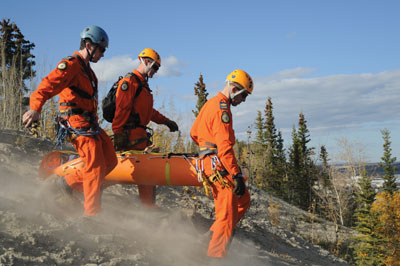 |
|
| Master Cpl. Phil Friolet, Sgt. Bryce Culver and Master Cpl. Steve Delage from 424 squadron based out of Trenton, Ont., move a simulated casualty while participating in a land rescue exercise during SAR Exercise (SAREX) 10. Photo: Cpl. Darcy Lefebvre, Royal Canadian armed forces
|
Last summer, Operation Nanook included a government-wide response to a major air disaster. Tragically, what was intended to be a simulated exercise turned into the real thing when a chartered First Air Boeing 737 crashed into the ridgeline above the runway at Resolute Bay. Because of the resources in the Canadian Forces camp below – including SAR techs, Coast Guard, Environment Canada and Transportation Safety Board – lives were saved. But the accident reignited the debate about CF SAR capabilities, including the FWSAR project. In an interview in the weeks after, Lieutenant-General Walter Semianiw, Commander of Canada Command, noted that placing CF search and rescue resources throughout the North would not be practical. “Could you help improve the capabilities of communities to respond?” he asked. Perhaps outsourcing certain aspects of SAR is one such option.
Whatever the solution, the government needs to decide soon – the Buffalos and legacy Hercs are not getting any younger. Cabinet is reported to have signed off on the FWSAR project, but a decade since the program was first made a priority, most would call it a work in progress.
Chris Thatcher is editor of Vanguard magazine.